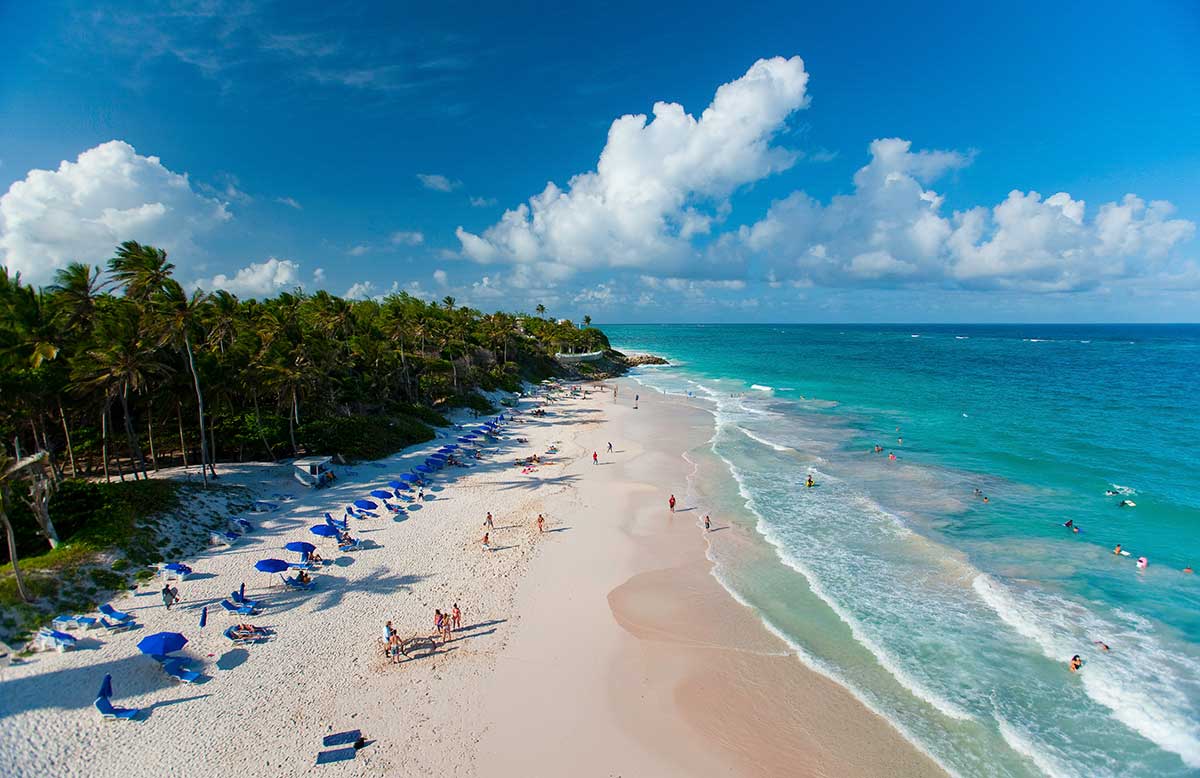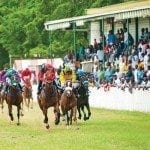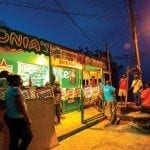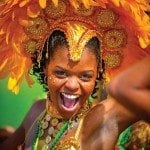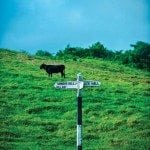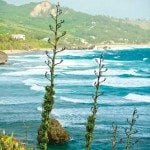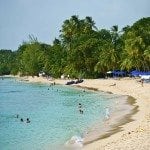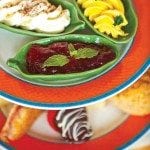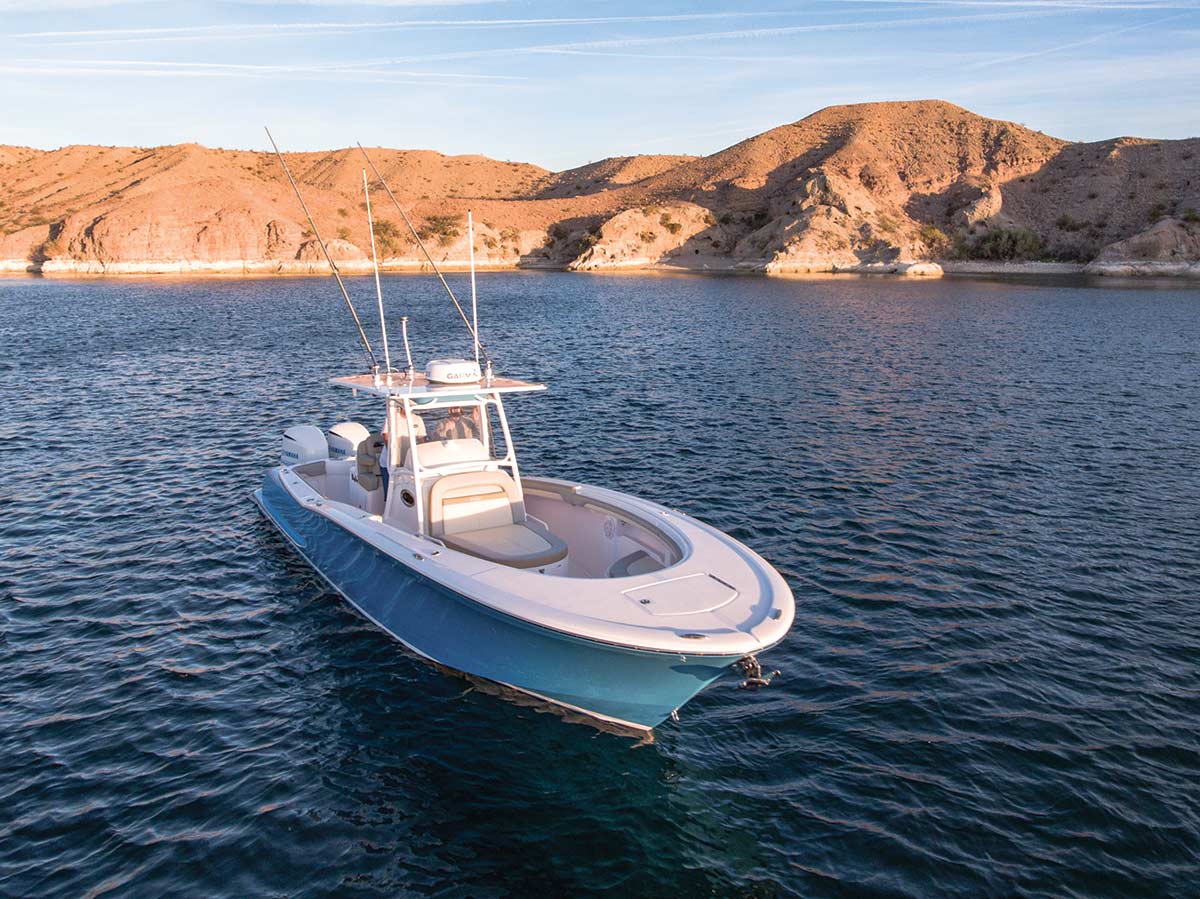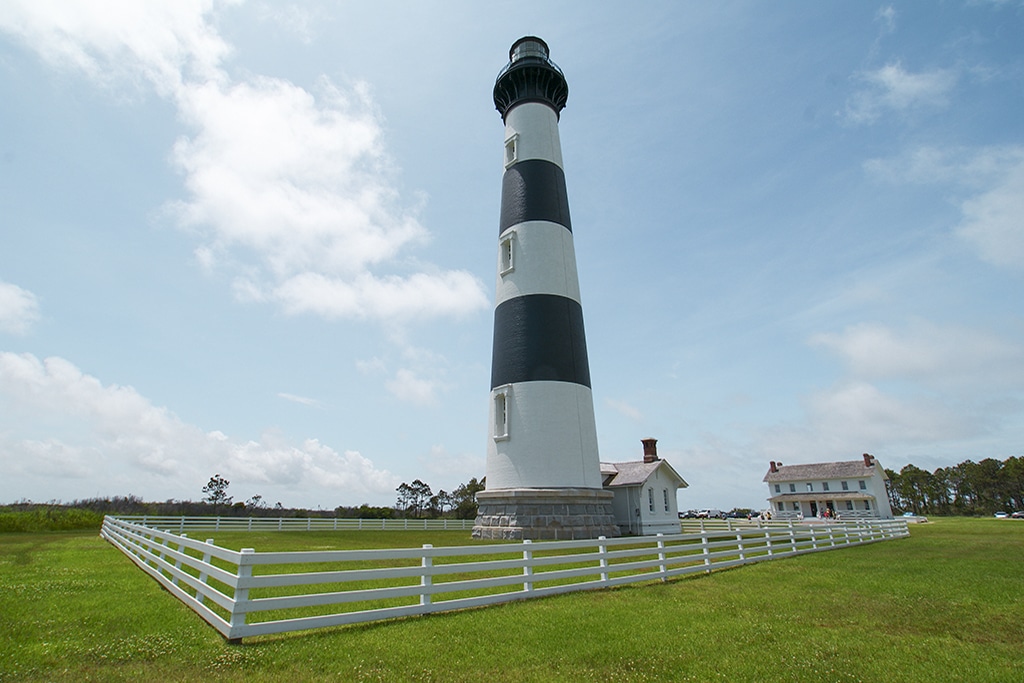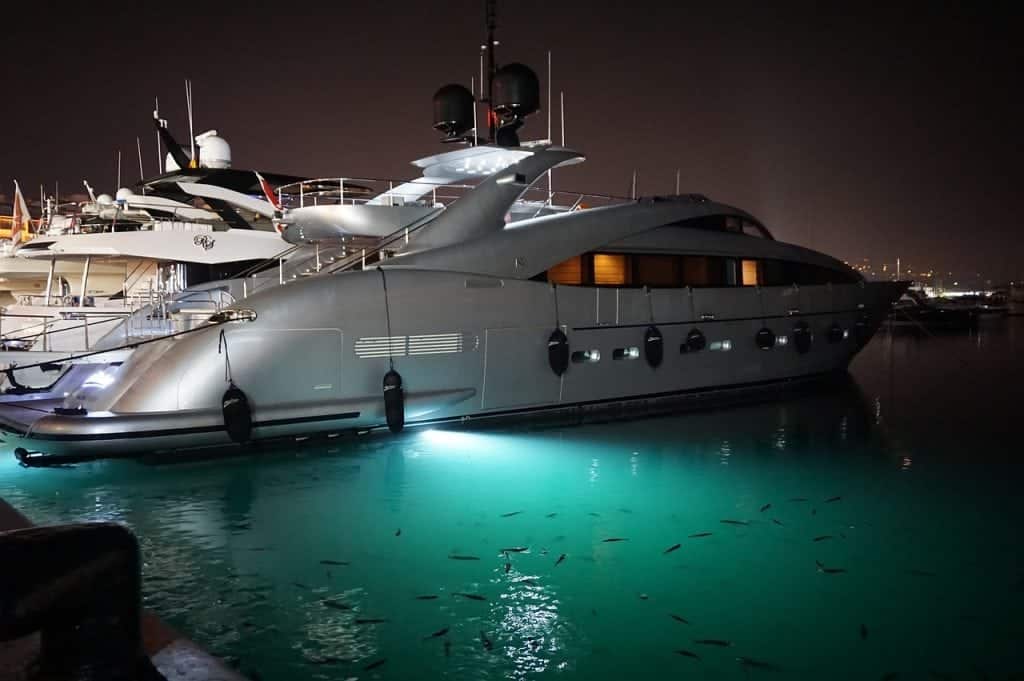Barbados beckons to those seeking pristine beaches, a bottle of rum and a touch of history.
Traditionally known as the first landfall for New World-bound ships from Europe and Africa, the small country of Barbados is today more famous among cruisers for its beach beauty and restored British architecture. The island also proudly lays claim to being the birthplace of rum.
While cruise ships coming from Europe still keep Barbados’ “first port-of-call” fame intact, American cruisers often discover Barbados toward the end of a voyage down the Antilles. Slightly outside of the hurricane belt and with several protected harbors, the island is a popular over-wintering spot.
Barbados is a coralline island (part of the secret behind its more than 80 snow-white beaches) but makes up for its relatively flat interior with a varied coastline. The most remote and uninhabited corner of the island is the far north where ironshore cliffs rise up from the sea. The coastline turns gentle as it sweeps south along the Caribbean side. The Platinum Coast—so named for the amount of money concentrated in the villas and hotels around Bridgetown—sweeps down along the west coast. The island’s far eastern shore turns wild again, with elegant beachfront resorts giving way to small fishing towns and a more easygoing local life.
Amerindians from South America originally settled the island before the arrival of Europeans in 1627. The advent of the slave trade and the establishment of sugar cane plantations quickly turned the island into a hub for trans-Atlantic business.
More so than anywhere else in the English-speaking Caribbean, Barbados retains much of its colonial architecture. The grand Georgian and Victorian mansions of the upper-crust British administrators and the sugar barons’ coral-stone “Great Houses” out on the plantations remain as enduring monuments to what was once one of the richest ports—thanks to sugar—in the Empire. More than a dozen 17th and 18th-century buildings still survive throughout the island. No less remarkable are the brightly painted chattel houses—mobile wooden homes built by freed slaves. This architecture is unique to Barbados and a testament to the unbroken African spirit that not only survived the darkest days of the slave trade but also prevailed.
To get a good sense of Barbados’ history, head south to the Sunbury Plantation House in the heart of St. Philip’s sugarcane country. The 300-year-old plantation has been restored to its original grandeur and serves breakfast, lunch, afternoon tea, and candlelit dinners. Hunte’s Gardens in the cool highlands of St. Joseph offers a private botanic garden with whimsical statues, winding paths and shaded benches for quiet contemplation. Enjoy a chilled glass of rum punch at the end of your tour, and shop for souvenirs in the nearby nursery.
Hurricanes rarely strike Barbados. The climate is deeply tropical with northeast trade winds keeping the highs to an average of 78 degrees, and daily rainfall amounts to less than a quarter inch. Beachgoers quickly find the water just as delightful, with a year-round range in the low 80s. The island experiences two mild seasons: the dry season (winter and spring) when the temperatures dip slightly and less rain falls, and the wet season (summer and autumn) with warmer days and more precipitation.
The roughly quarter million locals, known as Bajans, are mostly descendants of African slaves and West Indians but retain strong cultural ties to the British. Cricket games, high tea and horse racing are among some of the favored pastimes. Islanders share a conservative, religious outlook on life—more than 75 percent are Christians—and Sundays can be particularly quiet days, especially beyond Bridgetown. This tradition comes through on a daily basis with the polite nature of Bajans; visitors are besieged with “good morning” greetings and smiles.
The religious conservatism notwithstanding, the Bajans also share a common love of partying. Friday and Saturday nights see locals gathering at rum shops to debate politics or heading to the beach for an evening fish fry and impromptu party.
The island’s endless celebrations are another draw for cruisers. February kicks off with the Hometown Festival in St. James Parish, followed by the Oistins Fish Festival food fair and the Sandy Lane Gold Cup horse races at the historic Garrison Savannah Racecourse. There’s a Barbados Reggae Festival in early spring before festivities culminate in summer’s Crop Over Festival to celebrate the close of the sugarcane harvest. This spectacularly colorful multiday celebration has evolved into one of the wildest carnivals in the Caribbean with dancing bands, late-night parties and copious amounts of rum.
It doesn’t take much effort to find rum on Barbados. The island is the self-proclaimed birthplace of and rum capital of the world. Rum shops (small, local bars) are ubiquitous around the island and a popular gathering spot for locals and tourists alike to enjoy a rum punch or Bajan painkiller. The island’s rum heritage goes back over 350 years, but it wasn’t until 1703 that the island began exporting its alcohol. That was the year Mount Gay Rum first began operations. A popular way to explore the rum culture is to join a Mount Gay Rum Tour and see how the island’s oldest distillery makes rum. Not surprisingly, the tour ends in the bar with a taste-testing session.
Barbados’ capital, Bridgetown, is worth a visit, whether you’re looking for the latest nautical charts or need to fix a prop. An attractive port, Bridgetown and its garrison have been named World Heritage Sites. The harbor often looks more like a glacier since it’s bow-to-stern with iceberg-white cruise ships for most of the year. But just a short taxi ride downtown provides access to malls, duty-free shopping and blocks of beautifully restored colonial architecture. The inner marina and Chamberlain Bridge create a safe haven for small boats, while Independence Square, in the center of the city, is a great place to relax, have a picnic and take in views of Parliament.
Beyond the marinas, sailors will find plenty of adventure. The annual Mount Gay Round Barbados Race (January 16-24, 2017) celebrates the island’s nautical history, while a variety of smaller regattas are held on weekends throughout the island.
Barbados is also popular for water sports beyond sailing. Scuba divers will find plenty of dive sites scattered along the coral reefs. Much of the dive action is clustered around Carlisle Bay Marine Park near Bridgetown, as it’s home to a half dozen shipwrecks. Based on Pebbles Beach, Dive Barbados Blue is the only dive shop on the island with staff marine biologists. Their two custom dive boats can reach most of the dive sites between Carlisle Bay and Oistins Bay in a few minutes. The jewel is the Stavronikita, a 365-foot freighter sunk in the Carlisle Bay Marine Park. Dottins dive site off Holetown is a great place to spot sea turtles and barracuda.
Surfers are drawn to the east coast around Soup Bowl, an internationally famous surfing spot. The island’s near-constant winds (frequently onshore) and sheltered waters also make Barbados a mecca for kite surfers.
Story & photos by Jad Davenport, Southern Boating Magazine November 2016
— BARBADOS CRUISER RESOURCES —
DOCKAGE
Port Ferdinand Marina and Luxury Residences
Retreat, St. Peter; portferdinand.com
U.S. & Canada (855) 346-8662
Barbados (246) 272-2000
-82 residences, 120 full-service berths, ships’ store, and marina services
Port St. Charles Yacht Club
St. Peter; portstcharles.com/berthing
(246) 419-1000 ext. 2230; Dockmaster Derek Ince
-Berths up to 200 feet, 6 megayacht berths up to 250 feet, 2 offshore mooring buoys for yachts greater than 250 feet
MOORING/ANCHORAGE
As always, we encourage readers to consult their most up-to-date and preferred cruising guide for the safest anchorages with the best scenery.


